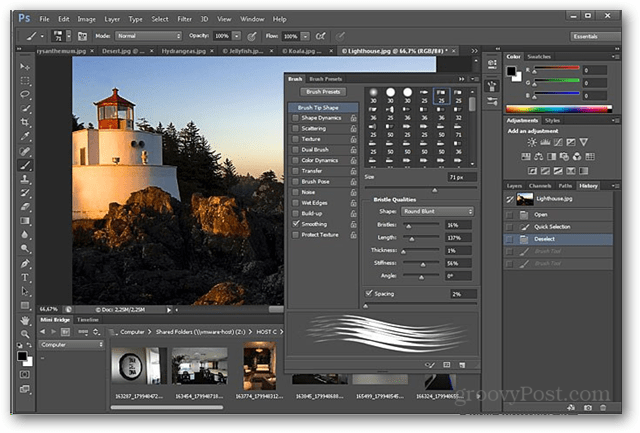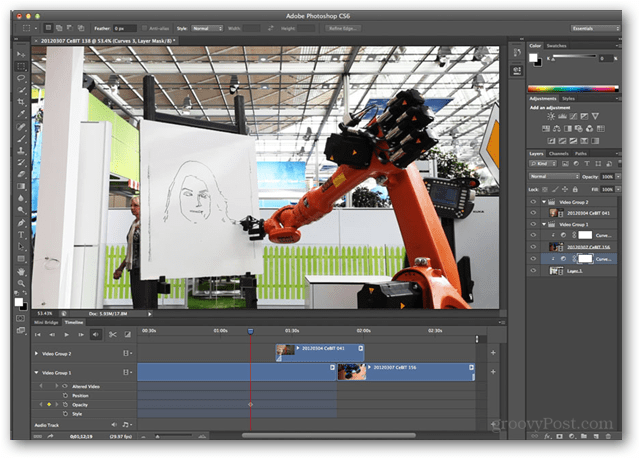ActionScript, ASP, C#, CSS, ColdFusion, EDML, XHTML, XML, XSLT, HTML, Java, JavaScript, PHP, VB, VBScript, and WMLAfter color grading:
What is Adobe Fireworks?
Fireworks is a fascinating creature. Like Illustrator, it works primarily with vector graphics with some marginal bitmap editing available. But, Fireworks is oriented for web and mobile application development. Fireworks can make just about any graphics interactive, and it allows you to create both wireframes and object behaviors. With that said, it is geared more towards developers and less towards artists. But, there are examples of artists who use Fireworks almost exclusively, such as The Oatmeal webcomics. And artist Jose Rivera uses Fireworks almost exclusively for all of his work found here.
Overall it is a useful program to have in any graphic artist’s arsenal. Even though it lacks some of the vector editing capabilities of Illustrator, Fireworks can create brilliant user interfaces, websites, and interactive websites in a vector or bitmap format.
What is Adobe Prelude?
Prelude is a video tool for the cut-and-edit guy before sending off the footage to the production team. If you have hours of footage to go through, it will take forever to do it in Premier. That is where Prelude comes in to save the day. Prelude can log videos, tag, transcode, and search through footage quickly. If there’s a particular scene or shot that you need to find, Prelude can find it almost instantly. Prelude isn’t for editing; it is for screening clips and organizing them.
What is Adobe After Effects?
After Effects has been the leading program in the video compositing industry since the ’90s. It is used for adding visual effects to videos or animations. After Effects can also be used to create animations of both text and complex characters. Other things like adding clips into a clip or overlaying green-screens come with ease. A quick run through YouTube will show kids using After Affects how to add lightning strikes, glowing eyes, and lightsabers to their videos.
After Effects packs some of the most powerful editing tools available for video, such as the Rotobrush which lets you automatically paint a character out of any background you choose in minutes vs. hours of manual frame-by-frame editing. All of these features make this program specifically hardware intensive, so be sure to have at least 8GB of ram and a ton of CPU power before trying to use it.
After Effects can do a lot, and even though it is easily overshadowed by programs like Flame and Smoke Advanced, it won’t burn a $60,000 hole in your pocket like the latter.
What is Adobe Premiere Pro?
Premiere Pro is used to edit and cut video tracks, and then export them in the desired format. The project panel allows you to grab individual clips and add them to a timeline to create a movie. Titles can be added, elements from the rest of the Adobe suite can be added, and color corrections can be applied. It wasn’t until recently that Premiere started to receive a lot of attention. It was with version CS5.5 that the Mercury Playback Engine was refined, which allowed faster performance that takes advantage of GPU-acceleration and multi-core processors.
Until recently Adobe Premiere Pro has failed to make much of an impression on a broadcast market dominated by Avid and Apple. In all honestly, older versions weren’t that great. But, that all changed with the introduction of the Mercury Playback Engine, and Adobe Premiere Pro CS6 takes the app up to the next level. Now it is used by professionals throughout the video editing industry.
What is Adobe Photoshop?

Photoshop is the go-to image editing and manipulation software used by almost everyone in the industry. Photoshop excels in working with raster (bitmap) graphics and is capable of producing highly detailed compositions. While originally intended to be a photo manipulation program, Photoshop has been taken up by digital painters and design professionals in both the classroom and workplace.
Recent versions have brought in functionality for working with 3D designs, though the program still primarily garnishes the most respect for its photo manipulation and post-production ability.
What is Adobe Flash?

You know those funny animations and web games you play on Facebook and other sites? Many of them were designed using Flash. Flash can be used to create a cartoon, comic, an interactive interface, or even a game. Although since the introduction of HTML5, it has been losing support, Flash is still currently used everywhere on the web. In particular, Flash has recently been used to create a multitude of media players – such as the default video player run by YouTube.
What is Adobe Audition
Audition is the sound room. Useful for editing audio, it can be used to edit and mix sounds or fine-tune and re-master soundtracks. Historically, it was often used by radio stations for cutting and adding sound effects.
What is Adobe SpeedGrade?
adobe speedgrade
SpeedGrade is for color grading images. At first glance, this doesn’t sound like much. But, correctly applied color can add depth, emotion, and character to a picture and videos. When it comes to color grading, there isn’t much to talk about, but rather an example serves best, so check out the images below.
Before color grading:
In the image above, color grading was applied using multiple layers and a separate mask for the sky. These brought out the warmth in the terrain, and coolness in the sky.
What is Adobe Encore?
Encore is a DVD and Blu-ray disc authoring package for professional producers that comes as part of Adobe Premiere. Encore can create DVD menus that can be edited in Photoshop using layers. Encore can also produce video in multiple formats, regardless of the original.
What is Adobe Flash Builder?
Flash Builder is based on Eclipse to create a development environment that increases efficiency in deployment for mobile and desktop web applications. Primarily it is functional for creating rich internet applications across multiple platforms, but mainly Flash. The code can be modified using a graphical interface or in plain MXML and ActionScript.
What is Adobe Acrobat X Pro?
Acrobat X is used for creating robust PDF files. It lets you set backgrounds, foregrounds, and isolate or resize individual pages. It even goes as far as to allow you to add video, audio, and interactivity to PDF documents.
What is Adobe Media Encoder?
Media Encoder lets you save media for almost any screen or device. It supports multiple formats, including FLV, F4vV, and H.264. Media can simultaneously be saved in multiple outputs for optimal playback on a variety of resolutions and devices. Cue points can be added to playback to trigger presentation specific actions. Video can also be resized or cropped within Media Encoder. Metadata editing is supported in the most recent version and will pass information to the rest of the Adobe suite.